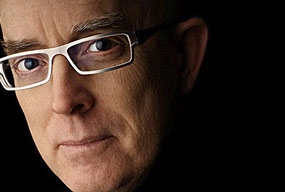Extra Added Attraction: How to Boost the Reach of Your Nikon 1
When the first Nikon 1 V series camera, the V1, was introduced in October, 2011, photo enthusiasts as well as serious Nikon shooters saw good reasons to own one: here was a versatile, ultra-compact, ultra-quiet interchangeable lens camera capable of producing superior quality still and video images, a camera with features that made it ideal for everyday active-lifestyle shooting plus the small size and versatility that made it a perfect traveling companion.
One of the pro shooters who quickly latched on to the V1 was Mark Alberhasky, but it wouldn't be until two months later, with the introduction of the FT-1 mount adapter, that he began to realize that he was going to like this camera a whole lot more than he'd expected. With the FT-1, his Nikon 1 would now accept AF-S NIKKOR lenses, and that meant he could take advantage of the Nikon 1's 2.7x crop factor and effectively increase the reach of his NIKKOR lenses.
Crop factor is the Nikon 1 camera's added attraction. Here's how it works:
A lens transmits a circular view of a scene to a camera's rectangular sensor, which records the image. In a Nikon FX D-SLR, the sensor is the 36x24mm size we're familiar with from the days of 35mm film. Sensors in Nikon DX and Nikon 1 cameras are smaller, and thus they capture a smaller portion of the scene; in effect, they "crop" the scene and narrow the angle of view of the lens attached, creating the appearance of a magnification of the image. With DX cameras, the lens you use will appear to have 1.5 times greater magnification; with Nikon 1 cameras, 2.7 times. It's important to understand that this is not true magnification; rather, it is the equivalent effect of the image being cropped relative to the size of the image sensor.
So what Mark was anticipating was the 2.7x "magnification" of any image he shot using a D-SLR lens on the Nikon 1. For example, at its maximum focal length of 200mm, a 70-200mm NIKKOR on the Nikon 1 would provide the equivalent of a 540mm angle of view. The lens isn't really becoming a longer telephoto; rather, when the captured image is viewed on an LCD, a monitor or as a print, what's being seen is an automatically magnified image.
"The Nikon 1 was going to blow away a lot of boundaries that previously existed," Mark says. "Thinking about a 540mm view with a 70-200mm on a V1, I realized that there were going to be a lot of Nikon photographers who were going to want a Nikon 1 camera for just that reason."
(Below) Three views of the Bahai Gardens in Haifa, Israel. Mark used the Nikon 1 V3 for each, changing lenses in order to capture varied views. The wide view was taken with a 1 NIKKOR 6.7-13mm at 6.7mm; the medium view with a 1 NIKKOR 30-110mm at 30mm; the close-up with an AF-S 70-200mm NIKKOR at an equivalent focal length of 540mm. One camera, three small lenses, worlds of difference.
Mark's enthusiasm for the possibilities of the matchup of his Nikon 1 and D-SLR NIKKOR lenses was justified when he led a photo safari to Africa in March, 2012. "Along with my D3 and D300, I took the V1 and two of its lenses—the 10-30mm and the 30-110mm—and the FT-1 adapter." He had no intention of shooting with the Nikon 1 as his primary camera, but on the first day he put a 400mm f/2.8 NIKKOR on the V1 and was startled by the 1080mm equivalent angle of view—and the incredible resolution of the camera's sensor. "And that was it," he says. "With a 1080mm view, I was seeing compositions, reaching for them and making images that none of the others on the safari could get."
Eventually Mark moved up to a Nikon 1 V2 and is currently shooting with a V3. He's also made changes in his choice of cameras and lenses for photo treks and safaris as well as for casual shooting. "When I’m traveling light I'll take the Nikon 1 and one of its system lenses, plus the FT-1 and the 70-200mm f/2.8, and that's my kit for a tremendous option-to-weight ratio." For even lighter traveling, he'll pack a 70-200mm f/4 instead of the 70-200mm f/2.8—"it's two-thirds the size and weight of the f/2.8; very sharp, and a great value as well." And because with the FT-1 adapter there's no light loss, any D-SLR NIKKOR lens he places on a Nikon 1 camera mantains its true maximum aperture.
The Nikon 1 V series' dual role as high performance system cameras and complements to Nikon D-SLR photography is drawing more and more attention. "On every trek I've gone on, when people see me shooting a [Nikon 1] V camera with a D-SLR NIKKOR lens on it, they come up and hold it and look through the viewfinder," Mark says. "When they see that super-telephoto perspective, they get the idea right away."
And as we know, nothing is as powerful as an idea whose time has come.







